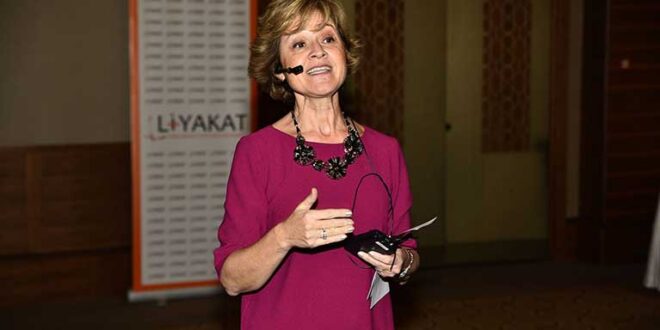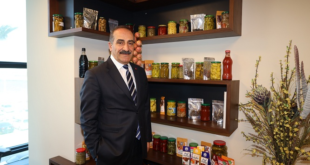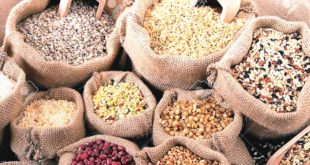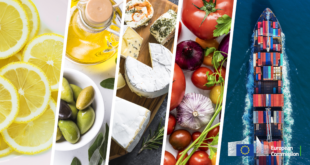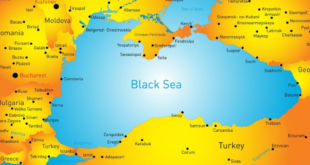There is a classic phrase: “Everything starts with a dream”. Two years ago, I had this sweet dream and said, “In order to be successful in agriculture in our country, I can go to parliament with a tractor if necessary, but with the farmers behind me”. Walking to parliament with tractors and farmers meant to impose the urgent need to reform “agricultural policies” and the necessity of the state to take the necessary initiatives and planning by taking care of its farmers. When I thought about that, I would smile inside and say “maybe, someday”.
When I read that the farmers protesting the new agriculture law in India continue their activities with their tractors recently, I was delighted to see that there are people in other countries who adopt this idea.
In September 2020, when the Government of India legalized 3 regulations that brought liberalization to the agricultural sector and ended the base price and support purchase policies, farmers began to take action with the idea that their earnings would decrease, intermediaries would be given more power and eventually they would be left without land. What was happening in a country where more than half of the farmers were in debt and 20638 farmers committed suicide from 2018 to 2019? What was the reason for this revolt?
These decisions, which were taken without consulting the farmers, on March 8 “Women Workers’ Day”, women in India also claimed farmers and participated in their actions. Thousands of women, wearing “yellow covers” representing the mustard fields, stood by the farmers in the country.
It may be helpful to describe the facts behind this struggle under a few headings:
Food security, food sovereignty, food democracy
What is Food Security?
I had never used the term “Free Farmer” until now. So why did I start using it? Until I listened to the webinar series “Political Ecology of Food” organized by the Istanbul Policy Center last week, I was not really aware of its importance.
Food security is a measure of the availability of food and the ability of individuals to access it. In 1974, at the World Food Conference, the term food security began to be used to emphasize supply. Food security can be provided by “availability of sufficient, nutritious, diverse, balanced and reasonable basic food from food sources in order to meet the steady expansion of food consumption and to balance fluctuations in production and prices”. Shortly after, the United Nations mentioned the concept of “Right to Food” in the Declaration of Human Rights in 1948 and acknowledged that the right to food is a humanity and a right to life.
The issue of the right to food and food security is not a new issue in our age, but there is evidence that it was a “concern” for communities even thousands of years ago. The Food and Agriculture Organization (FAO) has been conducting a study on this subject, covering 185 countries, since 1996. At the last summit in Rome; It was decided to reduce the number of people who could not be fed enough in the world to at least half. Also, in the document, the establishment of peace, stability, effective political, social and economic environment; It is also emphasized that the need for poverty eradication and for women and men to be on equal terms in development models.
Where does the problem start?
Considering that the world population is approximately 7.5 billion, the human presence in the world is increasing day by day, and the access to food is also increasing. Around one billion people in the world go to bed hungry and sleep hungry for the day. Over a billion people face and struggle with obesity caused by overnutrition. This injustice stems from the unplanned execution of food policies in a way that coincides with the bipolar world order after the Second World War.
It is also necessary to underline the subject of “Food Waste”. In a world where there are so many hungry people, it is not understandable that 10% of the food produced is not consumed and thrown away. Around 1.3 billion tons of food a day goes to waste.
It should not be forgotten that “water and food” will be the two most strategic products after the second half of the 21st century. Considering that fresh water resources are disappearing day by day with global warming, the fact that it will be difficult and costly for people to reach drinking and utility water, and the fact that we will face the danger of extinction of water, which is very important for agriculture, should worry each of us.
At what point does Food Sovereignty begin?
The peoples and communities living all over the world are produced by ecological and sustainable methods; They should have the right to have healthy, culturally appropriate foods and to determine their own food, agricultural systems and agricultural policies. Since the 1980s, both local communities and countries have already lost these rights. How Does? It is very simple, by “transnational companies” …
Developed countries claimed that the reduction / or zeroing of tariffs would be beneficial for the “liberalization” of food markets. Result; They destroyed the production structures of these countries by exporting many products they bought from farmers, even below the cost, to developing countries through dumping. More importantly, they put the farmer in the category of “worker” working in their own workplaces.
In order for us to talk about food sovereignty in a country;
1) The farmer should have the freedom to set the “product price”. As a result, he will be able to have a fair income.
2) Supports should not be given in a way that harms the farmer’s life and the sustainability of agriculture, and puts him under the burden of debt.
3) Food should not be a “commodity” in a country.
4) The cause of hunger is not “low productivity”. The real reason; it is the disorder and inequality of income distribution.
5) Seed should never be dominated by large corporations.
6) “Agricultural technologies” imposed on the world support industrial agriculture (agricultural poisons, chemical fertilizers, excessive water, company seeds, agriculture with heavy machinery), monoculture agriculture (growing a single or a small number of crops). In food sovereignty, “agroecological agriculture” (agriculture without pesticides, chemical fertilizers, using local knowledge, ecological processes) is essential and is a necessity for food security.
Food Democracy
“When the last river dries up, when the last tree is destroyed, when the last fish dies; the white man will understand that money is something that cannot be eaten. “
These phrases, an American indigenous proverb, explain the policies and business perspective of transnational corporations. Is it true? Surely “yes”.
Approximately 70% of the food in the world is produced by small farmers. European states carefully protect their small farmers and strive for their development. Because Europe knows very well that with the corporatization of agriculture, food sovereignty and food security will be at risk. They may have believed this understanding because of their “perspective on democracy”. So what is “democracy”?
It is a form of government in which political control is directly held by the people or by representatives freely elected by the people at regular intervals, where citizens are regarded as equal regardless of the social and economic situation. In short, democracy is freedom of speech. It is the freedom to act. So, is there a “food democracy” in our country? “Who should be the ones who have the right to speak?” “
The Confederation of Farmers’ Trade Unions was established in 2008 by the gathering of 7 trade unions organizing grape, tobacco, hazelnut, sunflower, grain, olive and tea producers. They recently made a press release and announced that they were gathering under one roof as “farmers’ unions”. This means; From now on, farmers will continue to organize not on a product basis, but on a “struggle” basis. Changing agricultural policies began to affect the way farmers engaged in agricultural production come together.
As this struggle started in the field, serious changes started to take place in the city. The urban population started to “protect their food” increasingly. They turned to more ecological products. Democratic participation in rural and urban areas has enabled new types of cooperatives to emerge. These cooperatives not only support the producer but also meet a common ground for their own consumer rights regarding food safety. Currently, around 20 cooperatives in Istanbul, called “consumer cooperatives”, support “local and rural development” and reach healthy food. Farmlands are, to some extent, witnessing a struggle against “neoliberalism.”
In this struggle, even though it seems difficult to produce an alternative to the “power asymmetry”, they learn to join their hands and forces with a rights-based approach.
Result
The issue of agriculture and food is no longer just a lane where states and governments can find solutions alone, local governments also take up the issue more. Metropolitan cities such as Toronto, San Francisco and London started to establish their own networks for the right to food, which was taken away by “national policies”. “Food committees” are established in cities only to support local farmers. Hopeful events are also happening in our country.
The farmer must be free. Central governments have to develop “farmer-centered” perspectives. Local governments, on the other hand, should support the equal, transparent and rapid access of “healthy food” without any discrimination by establishing an infrastructure that supports government policies, bringing producers and consumers together.
In our country, our farmers have the “right to protest”. They can. They should too ..
This is the only way to stop the “industrial agriculture” dreams of multinational enterprises.
Professor Dr. Meltem Onay
Vice Rector
15 November Cyprus University
 THE GLOBAL WINDOW OF TURKISH FOOD AND AGRICULTURE The Global Window of Turkish Food and Agriculture Sector
THE GLOBAL WINDOW OF TURKISH FOOD AND AGRICULTURE The Global Window of Turkish Food and Agriculture Sector


